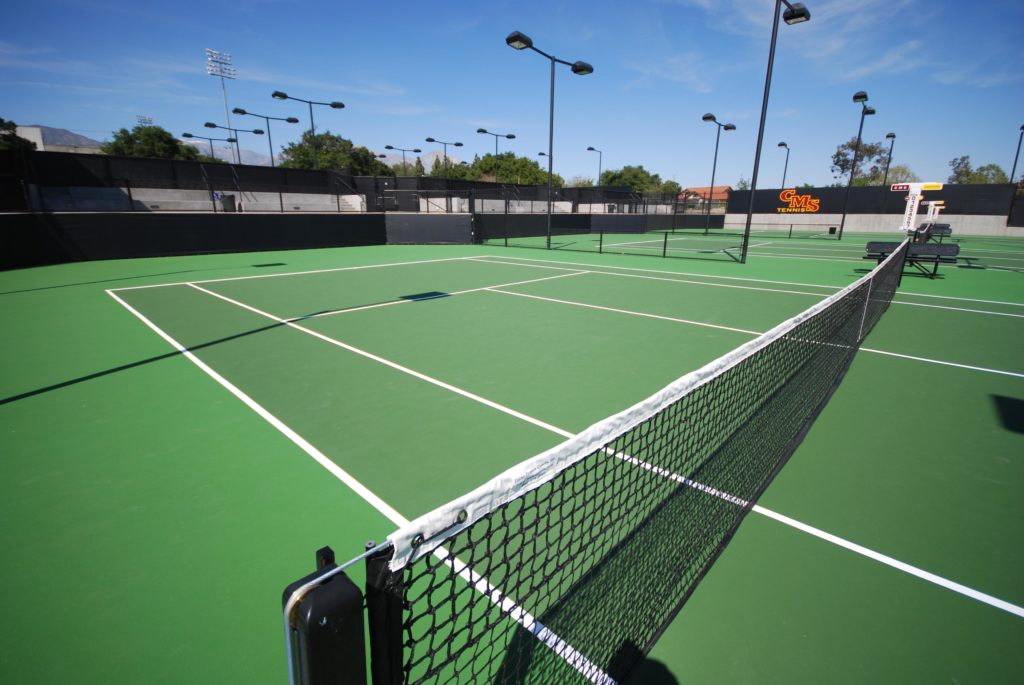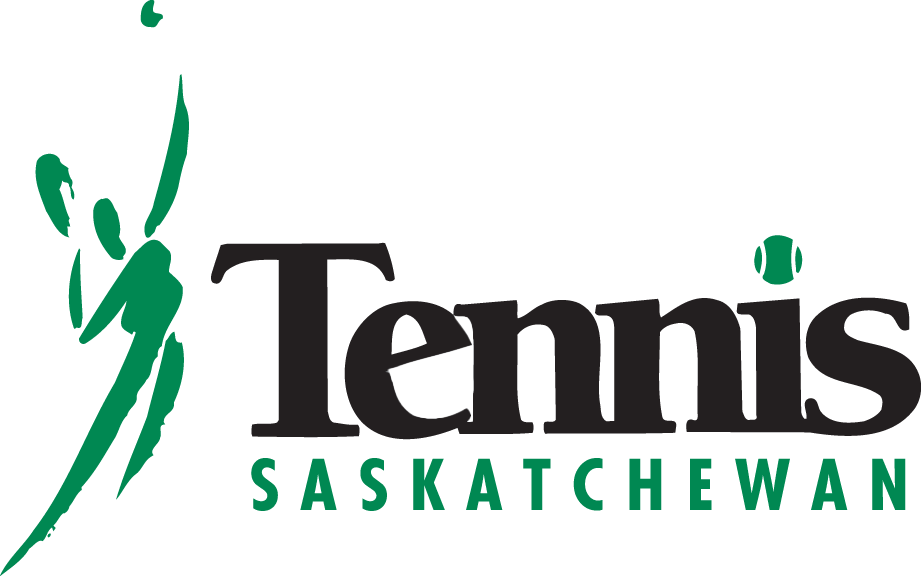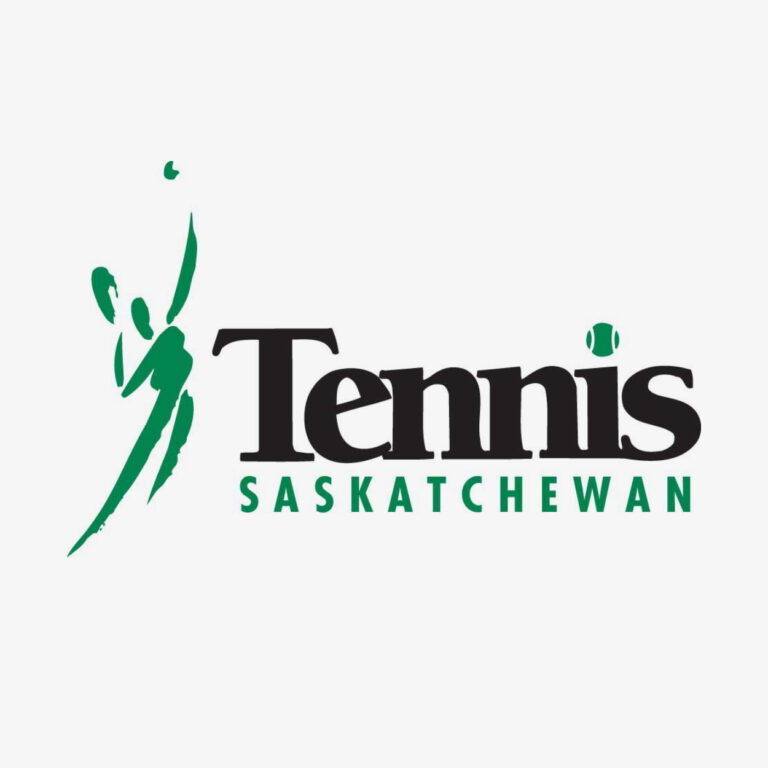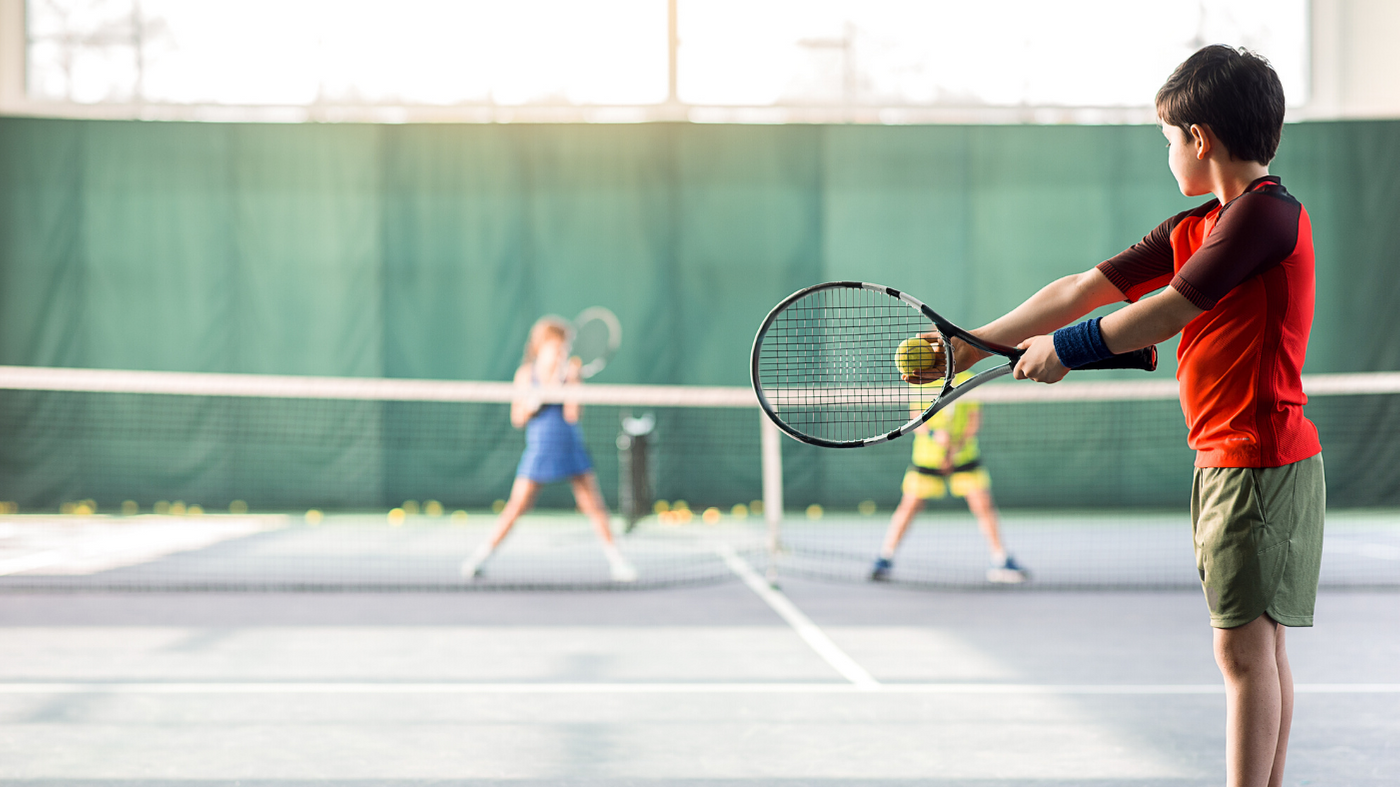
Tennis Clubs and Tennis Related Organizations (including administrators, coaches, and anyone organizing tennis-related activities) must be in compliance with the Group and Individual Activities Guidelines in the Re-Open Saskatchewan Plan (currently found on pages 77–83 of the Plan).
Updated Sports and Activities Guidelines
These guidelines have been taken directly from Re-Open Saskatchewan Plan. In addition to the Government of Saskatchewan Re-Open Saskatchewan Plan “Group and individual Activities Guidelines”, Tennis Saskatchewan encourages clubs to also abide by the following tips and recommendations (please click on “Organizing a Tennis Activity in Your Facility” found at the bottom of this page). Many of these tips and recommendations are also included in the Re-Open Saskatchewan Plan.
GROUP AND INDIVIDUAL ACTIVITIES
Outdoor sports and recreational activities for children and adults resumed on June 22. Indoor sports and recreational activities may resume on July 6. Operators must implement measures to prevent the transmission of COVID-19.
COVID-19 droplet transmission is much more likely when individuals are in close contact. The likelihood of transmission between individuals participating in sport, physical activity and recreation in an indoor setting is significantly higher. Transmission is less likely in an outdoor setting, where air flow is greater and there is more space for individuals to keep physically distanced.
COVID-19 can also be transmitted if someone touches a contaminated surface and then touches their face without washing their hands. Many activities involve shared equipment among participants, coaches/staff, instructors, officials or volunteers (e.g. shared baseballs, basketballs, volleyballs). The virus does not enter the body through skin; it enters through the eyes, nose or mouth when an individual touches their face. This is why regular hand hygiene and cleaning of high-touch surfaces are so important.
- Designate one or more people to be responsible for ensuring compliance with these guidelines. This should not be someone engaged in other critical duties (e.g. referee, cashier).
- Contactless fundraising activities are permitted.
- Staff and participants should be given information on physical distancing and other requirements prior to attending. Staff should discourage gathering.
- Signage must be posted to caution patrons about the risks of COVID-19.
- Encourage participants to arrive no more than five to 10 minutes before the scheduled activity to reduce people gathering in groups.
- Wherever possible, activities should be relocated to outdoor settings.
- Facility ventilation systems should be operational and appropriate for the activities being practiced in them.
- Facilities may need to consider:
- Increasing air circulation and ventilation, while preventing turbulent air flow.
- Providing natural ventilation by opening windows and doors, wherever possible, to increase air flow.
- Remove unnecessary common items, such as magazines, brochures, etc.
- Encourage patrons to limit their time spent in the facility, as well as maintain physical distancing when returning to their vehicles or homes.
- Registration processes should be completed online whenever possible; however, if in-person registration is required, physical distancing and sanitizing pens between uses is required.
- Indoor play spaces are permitted; however, increased cleaning and disinfection are required. Operators must put measures in place to ensure physical distancing of non-household members and provide access to handwashing facilities or an alcohol-based hand sanitizer approved by Health Canada (DIN or NPN number). Encourage operators to post signage.
- Food and beverage services are subject to the Restaurants and Licensed Establishments Guidelines.
- Drinking fountains must be closed. Water bottle filling stations are acceptable if appropriately and frequently sanitized.
- Contactless payment is preferred; however, cash may be accepted where necessary.
- Instruction is permitted with no contact and appropriate physical distancing. If physical distancing cannot be maintained or is unpredictable, a mask should be worn by the instructor.
- Parents and other spectators must not total more than the maximum gathering limits per the public health order per team at each game/activity, and must ensure physical distancing between non-household members.
- Request minimal spectators attend events. Discourage gatherings.
- Spectators must maintain distancing of at least two metres from other members of the public.
- Spectators (excluding parents and guardians where necessary for player support) should be kept out of participant spaces (e.g. fields of play, courts).
- If physical distancing is possible, certain individual and group organized sports, physical activities and recreation activities may proceed as normal (programming, training, practice and competition) while following the guidelines for general operations, cleaning and disinfection, etc.
- Tournaments and interprovincial competition / travel are not permitted.
- For sports or activities where participants are unable to adhere to physical distancing, groupings (mini-leagues) should be formed. Mini-leagues can be comprised of multiple teams, but no more than 50 individuals.
- Mini-leagues allow sports teams to return to a safe level of play, and will help mitigate the risk of widespread transmission by limiting the number of athletes that come in close contact with each other.
- The 50-person maximum per mini-league includes coaches/staff, instructors, participants from multiple teams, officials and volunteers who cannot maintain two metres of distancing from others at all times. Spectators, including parents, who are not part of a previously listed category, and others who can ensure physical distancing are not included in the 50-person total.
- No single group on the field, court, ice surface, etc. shall exceed the gathering limits in the public health order. Teams need to be separated while on the sidelines, and players cannot exceed gathering limits during games, practices or training.
- Mini-leagues must be comprised of individuals within the same neighbourhood, community or local geographical region (e.g. within a rural municipality, town, quadrant of a city or nearest community).
- Mini-leagues should remain together until restrictions are further relaxed.
- Game play can resume between teams in a mini-league and must be limited to teams within the same mini-league.
- Teams in different mini-leagues should not play each other.
- At least two metres distancing should be maintained between all individuals, except members of the same household, when off the field of play (e.g. on benches, during intermission).
- Contact must be minimized whenever possible.
- If physical distancing cannot be maintained or is unpredictable, a mask should be worn by those not participating in the activity (i.e. coaches, volunteers, etc.).
- Patrons/staff who are sick or symptomatic must not enter/participate. Participants, spectators and volunteers should use the Government of Saskatchewan’s self-assessment tool for COVID-19 and follow the subsequent directions.
- Players whose activities involve being within two metres of other players should self-monitor.
- Organizers must keep a record of attendees. All players, spectators, staff and volunteers must sign in on arrival with name and phone number and/or email to facilitate contact tracing, if necessary, and keep attendance records for a minimum of one month. Where possible, do not use a common pen. Providing this information is voluntary for attendees and can only be used for the purposes of COVID-19 contact tracing.
- If a person becomes sick, they should immediately stop participating and return home.
- If a person becomes sick or injured, and first aid or further care is required:
- Try to limit the number of individuals in contact with the sick person.
- Place a mask over the individual’s mouth and nose if they are not able to do so. Maintain a safe distance until the mask is in place.
- First aid providers caring for people should follow standard precautions. Those who provide direct care requiring close or direct contact should wear a mask.
- Following care, first aid providers should discard the mask and gloves following standard procedures and perform hand hygiene.
- Physical distancing must be observed at all times, with a minimum of two metres of space between individuals.
- Players on the same team grouping may be within two metres during play/drills. Intentional contact should be minimized where possible.
- Areas of congregation (e.g. team benches, bleachers) must be set up and used in a way that adheres to physical distancing requirements (i.e. only allow every other row in bleachers, use visual cues, etc.).
- Pylons or other markers should define the group space.
- Schedules should be staggered and the duration of the activity should be specified to promote physical distancing and allow for adequate cleaning and disinfection between uses.
- Wherever possible, promote physical distancing by:
- Promoting one-way traffic flow to avoid individuals from inadvertently interacting.
- Placing stickers or signage on the wall/floor every two metres.
- Limiting lane use on indoor tracks to every other lane to promote physical distancing.
- Spacing seats or assigning seating at two-metre distances.
- Reducing capacity in each room, venue, court or ice surface in the facility.
- Common area chairs and tables should be stacked, roped off or removed from the area to promote distancing.
- Consider physical barriers (e.g. Plexiglas) at patron contact points.
- Staff should wear masks when they are not separated by a physical barrier or two metres from participants. Other personal protective equipment may be appropriate depending on the task being performed (e.g. first aid or resuscitation).
- When facility staff are transferring a participant with a disability in and out of equipment, or assisting caregivers with an activity, the staff member and the participant should wear masks whenever two metres cannot be maintained.
- Cleaning and disinfection information for public facilities and workplaces is available.
- Increase the frequency of cleaning and disinfecting of commonly touched surfaces and shared equipment, such as vending machines, water fountain handles, doorknobs, handrails, light switches, countertops, tables, equipment handles and consoles.
- All frequently touched surfaces should be cleaned and disinfected prior to a new group being provided access to field space, including benches, dugouts, bleachers, railings, picnic areas, gates, etc.
- Increase the frequency of cleaning gymnasium floors to reduce the risk of transmission from shared objects (e.g. balls) and those who use wheelchairs.
- Encourage participants to bring their own equipment to the facility.
- Participant-owned equipment, including sport gloves, should be visibly clean.
- Shared equipment (e.g. tennis balls, basketballs, bats, etc.) must be cleaned and disinfected frequently.
- Participants should clean their hands before and after using shared equipment (e.g. climbing and gymnastics equipment).
- Where rental equipment is provided, it should be assigned to one person only and be laundered or cleaned and disinfected upon return.
- Ensure that handwashing sinks are fully stocked with soap and paper towels.
- Place an alcohol-based hand sanitizer approved by Health Canada (DIN or NPN number) in dispensers or soap and water handwashing stations near doors, common use equipment, washrooms/locker rooms, courtside and team areas, and other high-touch locations for patrons and staff. Patrons should be encouraged to bring their own hand sanitizer when possible.
- Hand hygiene should be performed prior to play and contacting shared equipment, as well as through the duration of the activity (i.e. intermissions, breaks, etc.) and at the end.
- Spitting (includes seeds, tobacco and fluids) and other similar activities increase the risk of transmission of COVID-19 and are not permitted.
- Individuals must not share personal items (i.e. equipment or beverage containers).
- Congratulatory gestures such as high fives and handshakes are not permitted.
- Spectators, participants and players, staff, coaches and volunteers should try to minimize cheering and whistling as much as possible to control the spread of COVID-19.
- Consider how to adapt activities to take place outdoors and modify play to decrease physical contact, whenever possible.
- Intentional contact during sport or activity must be limited. Modifications to activities that limit physical contact are recommended.
- Limit the sharing of objects and tools by staff (e.g. equipment, gloves) or disinfect between uses.
- Hand hygiene must be performed between tasks.
- Encourage staff to launder uniforms/work clothes between shifts.
- Employees are required to practice physical distancing at work. Avoid handshakes and any other physical contact with others. Remain two metres apart from others whenever possible.
- If staff are unable to maintain two metre distancing from coworkers, other measures should be implemented, such as self-monitoring of personal health, supervision by Infection Prevention and Control Officers or Occupational Health and Safety in the workplace. Other appropriate measures include:
- Staggering activities to limit the number of staff in a confined area during the same period.
- Moving activities to another room whenever possible.
- Altering break times to minimize the number of staff working in close quarters.
- Staff wearing non-medical masks (e.g. cloth or other materials) or procedure masks if distancing is not possible from other staff or patrons.
- Ensure staff are practicing proper hand hygiene and coughing/sneezing etiquette, including:
- Washing hands often with soap and water for at least 20 seconds.
- Using an alcohol-based hand sanitizer approved by Health Canada (DIN or NPN) when hands are not visibly dirty and handwashing isn’t available.
- Avoiding touching their face, mouth, nose and eyes.
- Coughing or sneezing into a tissue, then immediately disposing of the tissue and washing their hands. If a tissue is not available, they should cough or sneeze into their elbow, not their hands.
- Additional glove use for COVID-19 transmission mitigation is not required. If staff are using gloves, they should be changed after every interaction and when changing tasks. Hand hygiene must be performed between every glove change (hand sanitizer or handwashing with soap and water).
- All workers, especially those in constant contact with the public, should self-monitor for symptoms and use the Government of Saskatchewan’s self-assessment tool for COVID-19 and follow the subsequent directions. Facilities should review their employee illness policies to ensure staff are able to remain home when ill (as is required).
- Stagger staff arrival and departure times, lunch times, breaks and meetings to reduce the number of individuals in one place at a given time. Designate lockers and storage spaces for individual workers
- Ensure staff are adequately trained in new policies and protocols.
- Workplaces are encouraged to have plans in place for increased worker absences due to illness or isolation.
- Workplaces should have a workplace illness policy. If policies do not exist or are not in line with COVID-19 recommendations, workplaces should ensure the following:
- Sick employees should stay home or are sent home from work if symptoms present.
- Sick employees use the Government of Saskatchewan’s self-assessment tool for COVID-19 and follow the subsequent directions.
- If an employee has gone home sick, their work areas should be cleaned and disinfected.
ORGANIZING A TENNIS ACTIVITY IN YOUR FACILITY
- The activity must always comply with social distancing measures and recommendations issued by federal, provincial and municipal authorities, including the arrival and departure of players.
- Make sure to stagger booking times between different court rentals to create a buffer between sessions and avoid an overlap of players on the court.
- When possible, online reservations and payments are recommended. Otherwise, payments using a card are strongly recommended.
- Limit all occasions for gatherings by making all communal or public areas in your facility inaccessible.
- Limit yourself to the minimum number of employees required to operate.
- Communicate all hygiene measures in advance to all your participants.
- Provide your employees with masks, gloves and all other protective items and ensure that each member of your staff washes their hands regularly.
- Keep a record of all participants who come in, so that you can contact them if needed, for example, if an infected person should use your facility.
- Ask players under the age of 18 for a written consent from a parent/guardian authorizing them to participate in their tennis session.
ENCOURAGE SOCIAL DISTANCING
- Encourage participants to respect social distancing of 2 metres, recommended by government authorities and Public Health.
- Put in place measures to limit contact between participants and employees.
- Recommend that only one parent/guardian accompany a junior player.
PROVIDE A CLEAN AND SAFE ENVIRONMENT
- Clubs must have operational security procedures in place during the crisis related to COVID-19. These procedures must also be well displayed and communicated to all users.
- Delimit closed areas or the ones where a maximum number of people is required.
- Use markings on the ground to indicate proper distancing from employees, for example at the reception.
- Frequently clean all surfaces, including counters, door handles, benches, toilets, etc.
- All doors accessible to the public must remain open to avoid contact with door handles.
- All score cards must be removed.
- Soap or hand sanitizer must be made available to all participants in various locations throughout the facility.
- Regularly remind and encourage participants to wash their hands and adopt proper hygiene practices.
- Limit access to the locker rooms as much as possible.
- Close all water fountains and ask that all players bring their own refreshments.
COACHING
- To ensure distancing of 2 metres between players, group lessons should be limited to small groups.
- As much as possible, coaches must try to remain on the same court and adjust their schedules in order to stay on-site for the minimum amount of time required.
- Position players in designated and well spaced-out stations.
- Drills that require continuous play are recommended, as opposed to ones that require the use of an entire basket of balls.
- Limit the use of equipment such as cones and targets.
- Do not let players manipulate the practice equipment. Coaches should take charge of picking up the balls and keeping the court organized.
- Encourage players to use their racquet or their foot to push balls back.
TENNIS BALLS
- Exercise caution with tennis balls and ask players to avoid touching them. While there is still no evidence as to whether the virus can live on a tennis ball, we do know that contamination through respiratory droplets from one infected person to another can potentially survive on surfaces for up to three days.
- Try to restrict balls to one particular group, court or even day of the week. We invite you to identify them with a marker.
- Immediately replace all balls if a player is suspected to have been infected by COVID-19.
- Consider spraying tennis balls with a disinfectant spray after a session.




